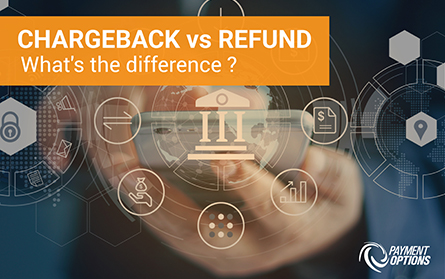Chargeback vs. Refund: What’s the difference?

Most buyers don’t know the difference between chargeback and refund, and most of the time, they use them interchangeably. But there is a considerable difference between the concepts of these terms, and only experienced merchants know that which one is lesser of two evils.
In this article, we have emphasized the difference between chargeback and refund by comparing these terms separately. Keep scrolling to read more.
What is a chargeback?
This is a particular kind of payment in which if a buyer is not satisfied with the product and wants his payment back, he has to involve his card-issuing bank. If a buyer cannot identify a particular transaction, he can request a chargeback by involving the bank.
The chargeback dispute doesn’t involve the merchant directly, and the card-issuing bank defines the legitimacy of a chargeback. In most cases, the bank doesn’t take too much time to return the money, and the investigation starts shortly.
The merchant also has the authority to dispute the chargeback by presenting the evidence and proof of the transaction’s legitimacy, and he delivered his services and goods properly.
The chargeback occurs in the following cases.
- The buyer tried to approach the seller for a refund, but he didn’t receive a refund.
- Seller offered the poor quality services or products
- The buyer placed several orders unintentionally
- Seller didn’t offer the service or products against the payment
- The cardholder was unable to identify a specific transaction
- Buyer canceled the subscription, but the recurring billing was included
What is a Refund?
A refund is a particular kind of payment a seller returns to the buyer, which was initially used for buying the goods or services of a seller. The buyer asks the seller for a refund if he is not satisfied with the services and that payment could be either partial or full.
These payments are comparatively more straightforward than a chargeback. The buyer can request a refund if the item was damaged, they no longer need that product, they purchased it unintentionally or the delivery time was too late.
Retailers have the right to set a particular refund policy, which is not applicable in a chargeback. They can refund particular items within a specific deadline, but a customer-friendly return policy allows you to develop a strong customer base.
A refund can be requested in the following order:
- A buyer purchases the products or services from a merchant
- If the customer is not happy with the quality, he can contact the seller for a refund
- The seller accepts the refund
- Clear return policy on the website helps the seller avoid refunds.
What is the difference between chargeback and refund?
There is a little difference between the chargeback and refund. Chargeback involves time, money, and resources.
- The main difference exists between the ways of how a cardholder receives the payment.
- The other difference is the fees because both in situations, merchants lose the revenue. A refund doesn’t cost extra charges or fees, but a chargeback includes additional charges. Banks request these extra charges for covering the cost of handling the process between merchants and sellers.
- The refunds can be initiated quickly compared to chargebacks. A few clicks can initiate the refund while the chargeback may involve several months.





